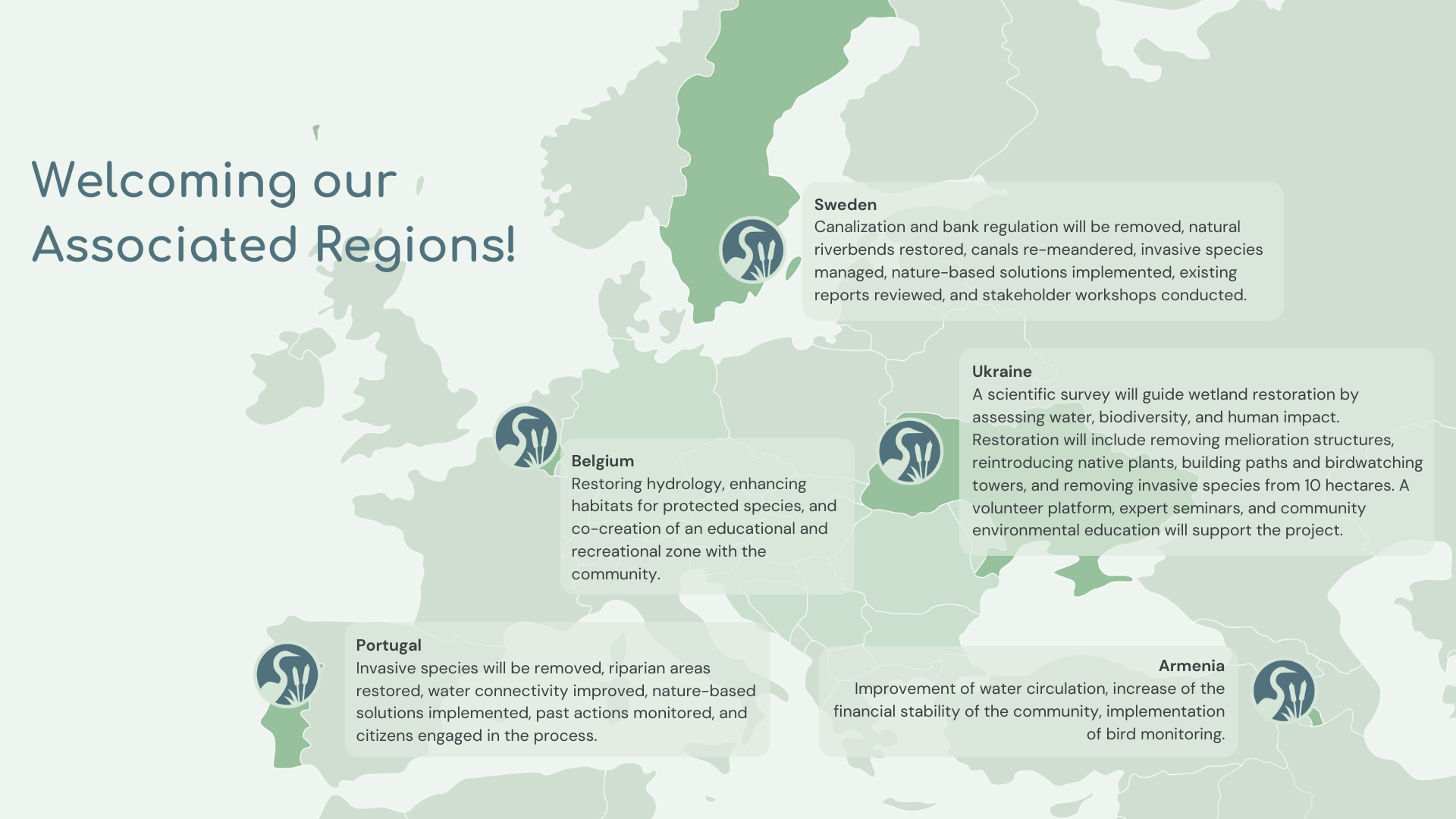Monitoring sites
Braila Islands, Romania

Site features
Braila Islands site has a total surface of over 2600 km2. This socio-ecological system is inhabited by near 300,000 people and comprises heavily modified ecosystems (e.g. Big Island of Braila, former wetland transformed into agricultural land, with an area of about 2300 km2) but also systems under a natural functional regime (e.g. Small Islands of Braila), being of a crucial natural and socio-economical value. The Danube river along the Braila Islands section has been ranked as a heavily modified water body according to criteria 2.1 (embankment works) due to the hydro-technical works on more than 79% of the river stretch sector and a candidate to “heavily modified” according with the WFD criteria 2.2 (regulation works) as a result of dredging of 21% of the river bed for intensive navigation. The main remnant of the natural floodplains consists in the wetlands from the Small Island of Braila Natural Park with a total surface of 210 km2 and the floodplains between the riverbanks and dikes of almost 93 km2.
Ecosystem
The land cover analysis for the reference state of the study area (prior to human made interventions), revealed five distinct classes: inland marshes (30%), bodies of water (11%), forests and semi-natural areas (33%), agricultural land (25%), and urban areas (1%). During this period, major parts of the area mostly comprised natural, unmanaged, near-natural ecosystems (marshes, bodies of water and forests). Under a natural regime, these ecosystems complexes were capable of providing a wide range of highly valuable Ecosystems Services in terms of their natural productivity levels (e.g., biomass, drinking water, fish, timber, game, and genetic resources); thus, they supported biodiversity conservation, facilitating the existence of a large number of habitats and species. During the 1960s, the case study area was subject to a large-scale land expansion that increased the agricultural area from 640 km2 to 1950 km2 (Big Island of Brăila), and now, agricultural landscapes represent 75% of the total case study area.
Facts & Figures

A total surface of over 2600 km2.

Habitat for a wide range of species

Agricultural landscapes represent 75% of the total case study area

Increase of Ecosystem services

Location
The site is located in SE Romania, along 78 km of the lower Danube River, between the cities of Hârșova and Brăila.
Size
Braila Islands site has a total surface of over 2600 km2.
This amazing site along the Danube floodplain is renowned for its ecological significance because it’s one of the last areas along Danube River preserving natural habitats for diverse wildlife and contributing to the conservation of biodiversity in the region.
Existing projects
In present the Braila Islands is the subject of many projects both international and national funded projects in which the team of the Research Center in Systems Ecology and Sustainability, of the University of Bucharest plays a key role:
- eLTER – which aims at building the distributed European Research Infrastructure of Long-Term Ecosystem Research sites and socio-ecological research platforms (eLTER RI) to provide highest quality data and services complementary to the European and global environmental RIs. The project will conduct important conceptual work and preparatory steps towards enabling European-scale investigation of the “Critical Zone”, major ecosystems and socioecological systems, targeted at supporting knowledge-based decision making at various levels concerning ecosystem services and biodiversity, and where Braila Islands serve as a research platform.
Previous restoration efforts
- The “Conservation, Restoration And Durable Management In Small Island Of Braila, Romania” LIFE+ programme funded project. The aim of the project was to guarantee the long-term conservation of priority habitats and species of European importance in the entire area of the SIB Natural Park. This aim would be achieved through the implementation of conservation plans developed in close cooperation with all the interested stakeholders that were engaged during the previous LIFE project. A total area of about 2 949 ha of important habitats would be restored in different areas of the park. However this serves as a bad example of wetland restoration and preservation as the technical works done in the project are no longer maintained and the dredged channels have closed in the present. The project has been carried out during the period from October 2006 to April 2011 spending a total of 978.419 €. The concrete restoration measures focused on the removal of Amorpha fruticosa, an invasive species, from an area of 212 ha, Restoration of the former alluvial forest on an area of 449 ha, Restoration of the natural hydrological regime on an area of 2,500 ha.
2. Conservation plan After-LIFE funded under national POS-mediu financing scheme that aimed at continuing the previous LIFE project by the ecological rehabilitation of aquatic ecosystems by unclogging lakes and canals of an area of 650 hectares in the area of lakes Popa and Cucova, using non-invasive methods and the rehabilitation of 210 ha of forest, according to the natural type of forest and conservation the gene pool in the park.
Restore4life upcoming monitoring activities
Apply remote sensing monitoring using drone aerial imagery for the assessment of habitat and biodiversity within the area, together with selected in-situ indicators to assess biodiversity, carbon sequestration, flood protection, mitigation of climate change impacts.
Involvement of the community
Local population, NGO, scientific community, traditional business and local public authority will be involved in the dissemination of monitoring within the case study area and the key findings regarding the role of natural habitat preservation will be explained during several workshops in a simple and accessible manner in order to enhance the understanding of sustainable development and conservation of natural landscapes
Expected Impact
Building knowledge in terms of biodiversity conservation and nature preservation for local population
Site gallery









